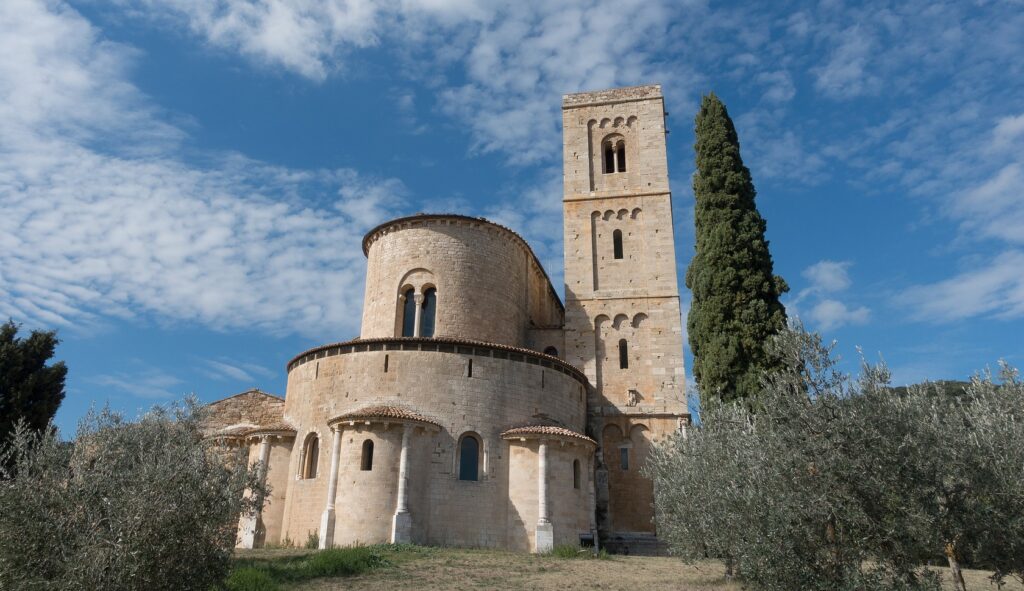From clarity to fluidity, here is a list of suitable terminology to describe the characteristics of wine during a tasting.
The complete terminologyfor wine tasting
More and more Italians are choosing to try wine tasting experiences offered by the most prestigious wine shops or tasting menus that pair gourmet dishes with selected wines at high-class restaurants such as La Sala dei Grappoli Restaurant near Montalcino. That's why, in order to get the most out of the experience, it's also useful to equip yourself with a complete and accurate wine tasting terminology, which allows you to fully appreciate the harmony of the combinations and the thousand nuances hidden in a glass of wine.
Wine tasting sheet: what it is and why it is important
Knowing which terms to use is also important if you want to fill out - or read - the wine tasting sheet, a valuable ally that allows you to organise the sensations felt during the tasting experience.
The most widely used model is the AIS (Italian Sommelier Association) wine tasting sheet, but also the FISAR (Italian Federation of Sommeliers, Hoteliers, and Restaurateurs) sheet: both are based on the analysis of the three fundamental aspects of sensory analysis carried out during tasting:
visual inspection
olfactory examination
gustatory examination
Here, then, is a short list of wine-tasting terminology useful for filling out a wine-tasting form and for appreciating the true value of a fine bottle, grasping all the nuances and peculiarities it holds.
Wine tasting terminology with visual examination
Describing the visual characteristics of wine is the first step in the tasting experience. The experience in fact begins with sight, and a fundamental role is played by the colour, clarity and fluidity of the wine.
Colour
The colour of the wine is the first element to be considered during the visual examination: distinguishing the different shades of colour and their reflections takes a lot of practice, but with time one can learn to distinguish a straw yellow wine from a golden yellow one.
Limpidity
The clarity of a wine depends on the presence or absence of suspended particles, such as yeast, sediment or other substances that could make the wine cloudy or opaque. A limpid wine appears crystal clear and brilliant and is an indication of higher quality and care in wine production, especially when it comes to sparkling wines.
Fluidity
In wine-tasting terminology, fluidity is a characteristic that is measured by the 'technical gesture' of rotating the goblet and observing the arches that the wine leaves on the rims: the wider the arches, the less fluid the wine.
Wine tasting terminology with olfactory examination
The second sense involved in tasting is the sense of smell: the bouquet of scents and aromas released by the wine is the result not only of carefully selected grapes, but also of a careful ageing process in special barrels, which enrich the wine's natural smell.
Intensity
The intensity of the wine is perceived through the first impact of the wine with the sense of smell: it is customary to bring the entire glass to the nose, tilting it slightly, and take slow, regular breaths.
Description
The description serves to define the type of aromas that characterise a wine (floral, fruity, etc.) and, more in depth, to recognise the individual essences that tickle the nose.
Wine tasting terminology with gustatory examination
The taste test isthe final part of the tasting process: the meaning of the entire experience becomes clear when the first drops of wine touch the tongue and palate, opening the door to endless sensations.
Wine Effervescence
The effervescence of the wine, which can only be distinguished for sparkling wines and sparkling wines, involves assessing the size of the bubbles and their persistence, i.e. whether or not they remain visible in the glass after the wine has been poured. The presence of bubbles also serves to clarify whether the wine can be associated with certain foods with a degreasing function, so it is important that this characteristic is included in the wine tasting sheet if it is accompanied by food.
Wine persistence
Wine persistence, within the broad terminology for wine tasting, plays a prominent role: it indicates how long the first taste sensation produced by the wine persists on the palate, even after swallowing.
Corpulence
Wine body refers to the sensation of fullness, weight and texture that is felt in the mouth when tasting a wine. It is a characteristic that indicates the presence of solid substances, such as tannins, residual sugars and extracts, which contribute to the structure of the wine.
Acidity
The amount of acids in wine determines its acidity, which can be perceived through a tingling sensation or freshness on the tongue. It adds vitality and structure to the wine, helping to balance the sweetness of residual sugars and the perception of tannins in the case of red wines.
Sapidity
Savouriness is a less common characteristic than other tastes in wine, such as acidity or sweetness, but it is equally important when it comes to wine tasting terminology. It depends mainly on the presence of mineral salts in the soil, which winegrowers carefully select.
Sweetness
The sweetness of wine is determined by the presence of residual natural sugars, which have not been completely converted into alcohol during fermentation. Words such as 'brut', 'extra-dry', 'dry', 'semi-dry', 'abboccato' or 'sweet' are used in wine-tasting terminology to provide a rough indication of the perceived level of sweetness in wines and sparkling wines.
Alcoholic strength
The alcohol content, indicated on the wine tasting sheet but also on the label, represents the percentage of alcohol present in the wine in relation to the total volume. It is a measure that informs about the concentration of alcohol in wine and is expressed as a percentage value. The alcohol content of wine can influence the sensory perception and body of the wine: a wine with a higher alcohol content may be perceived as more full-bodied, warm or intense, while a wine with a lower alcohol content may appear lighter or fresher.


